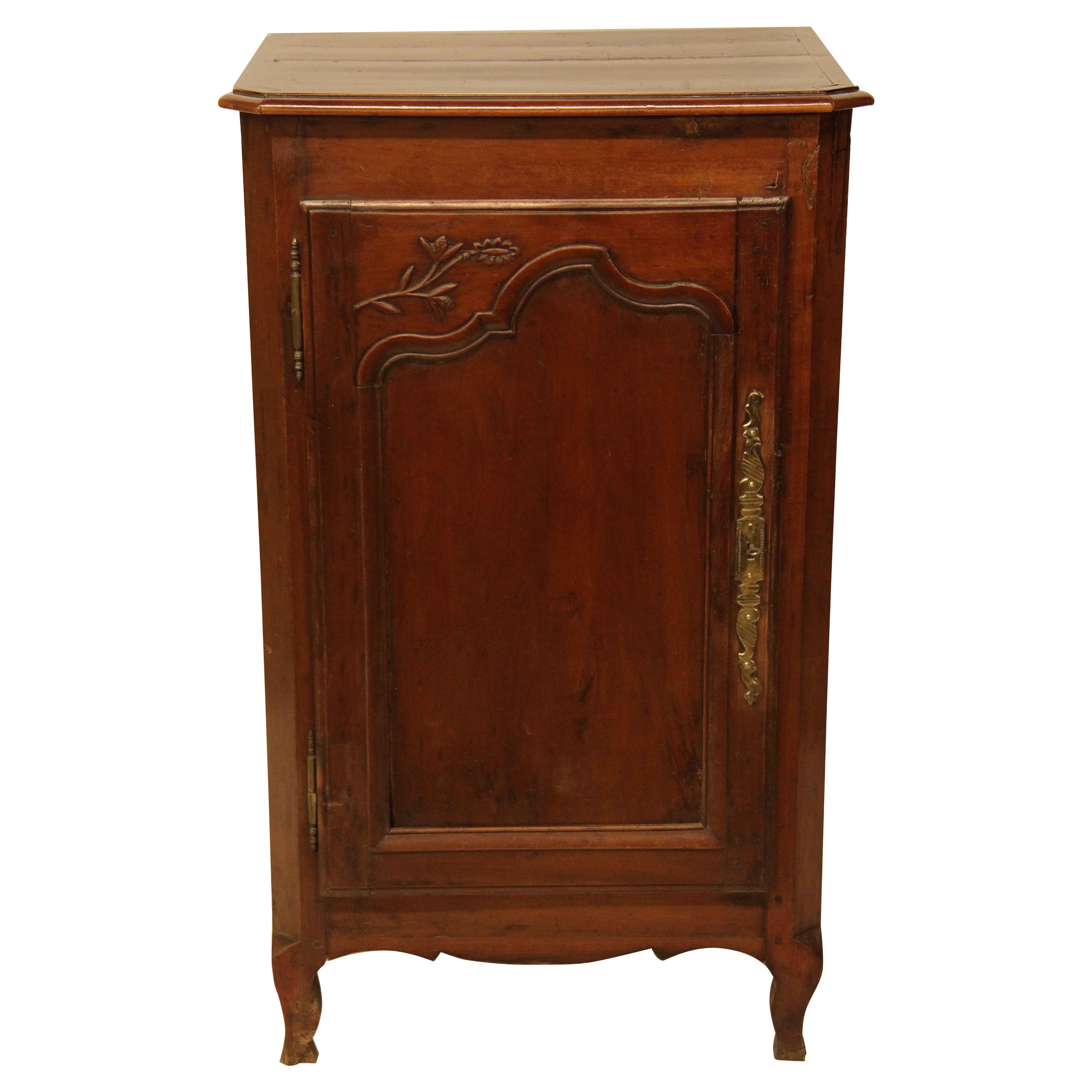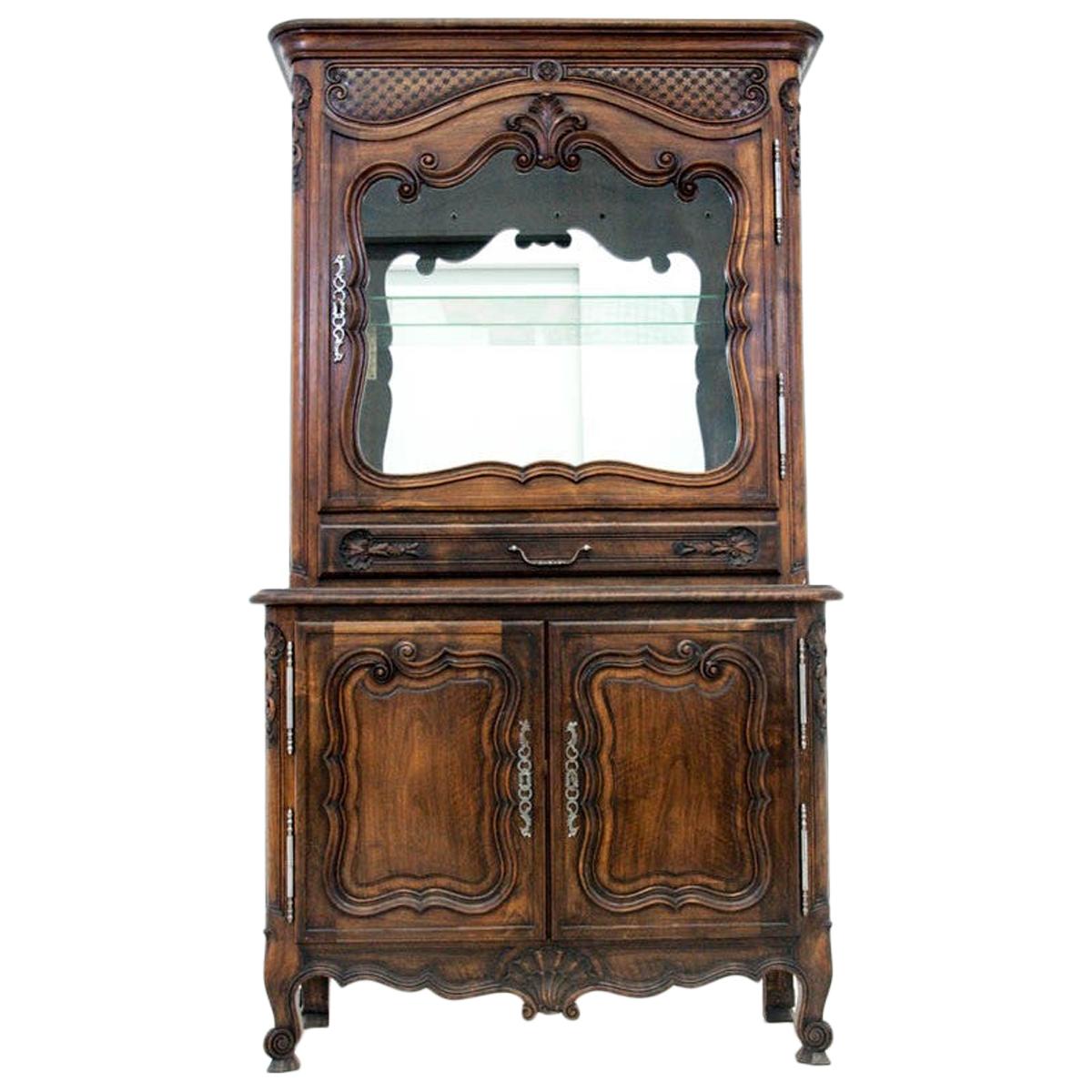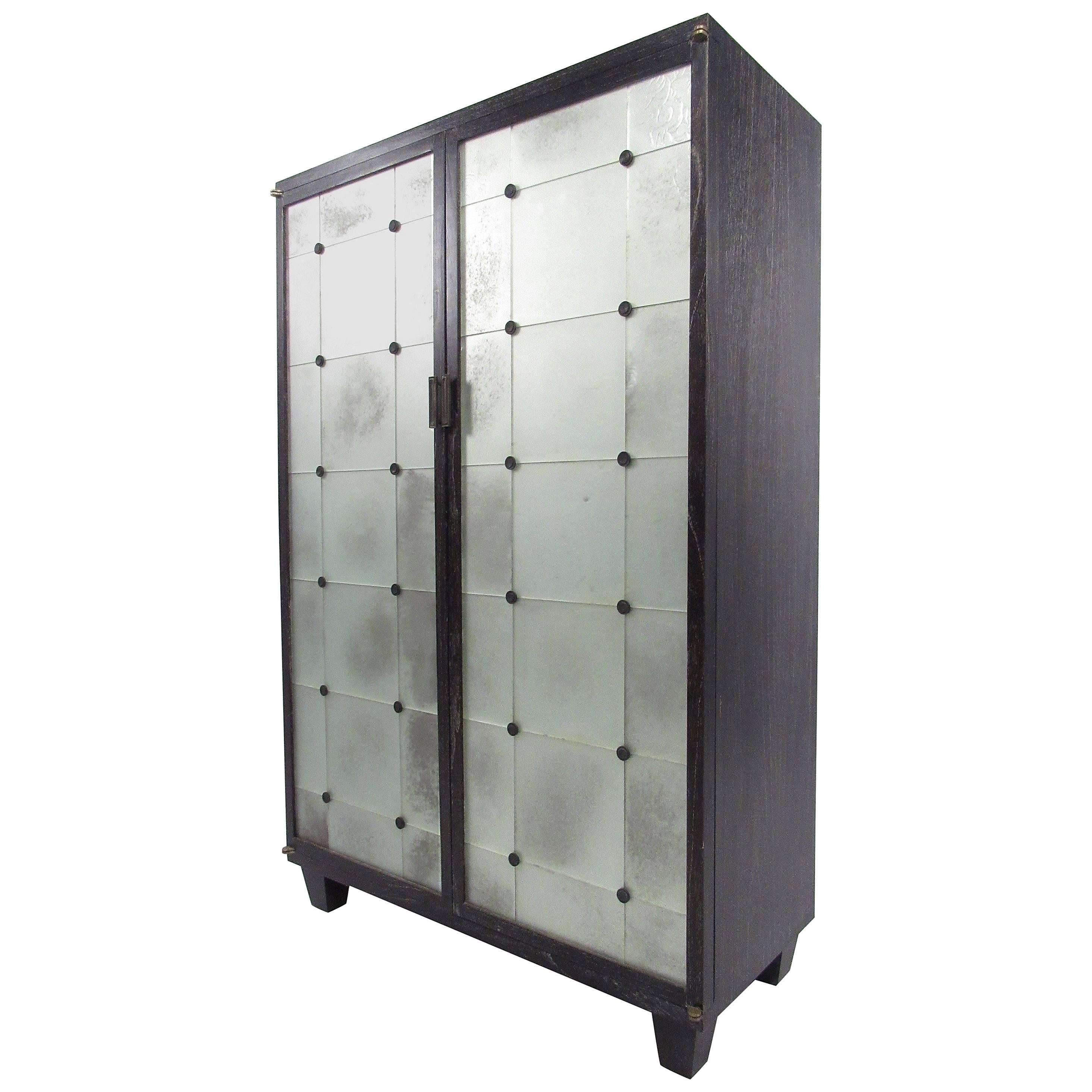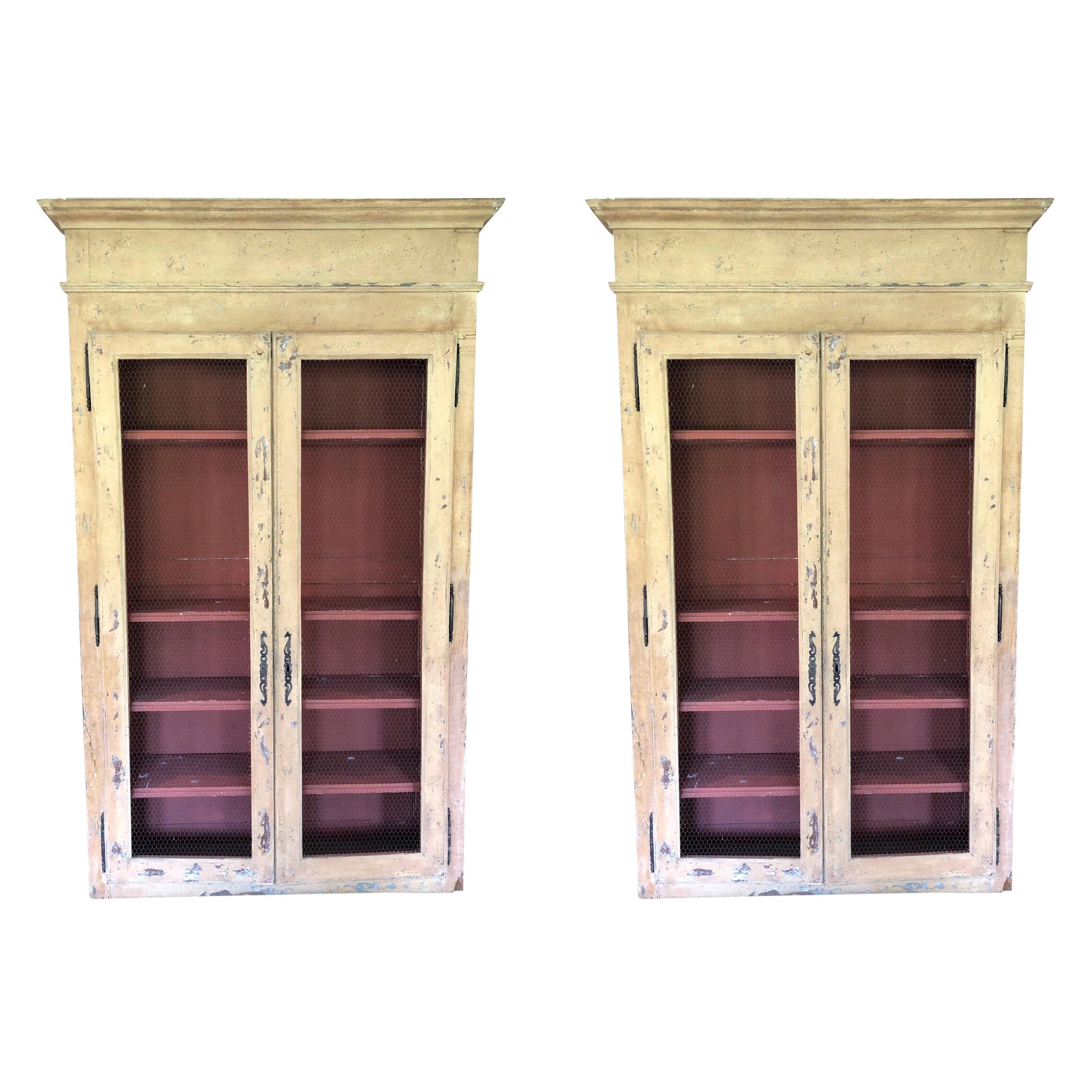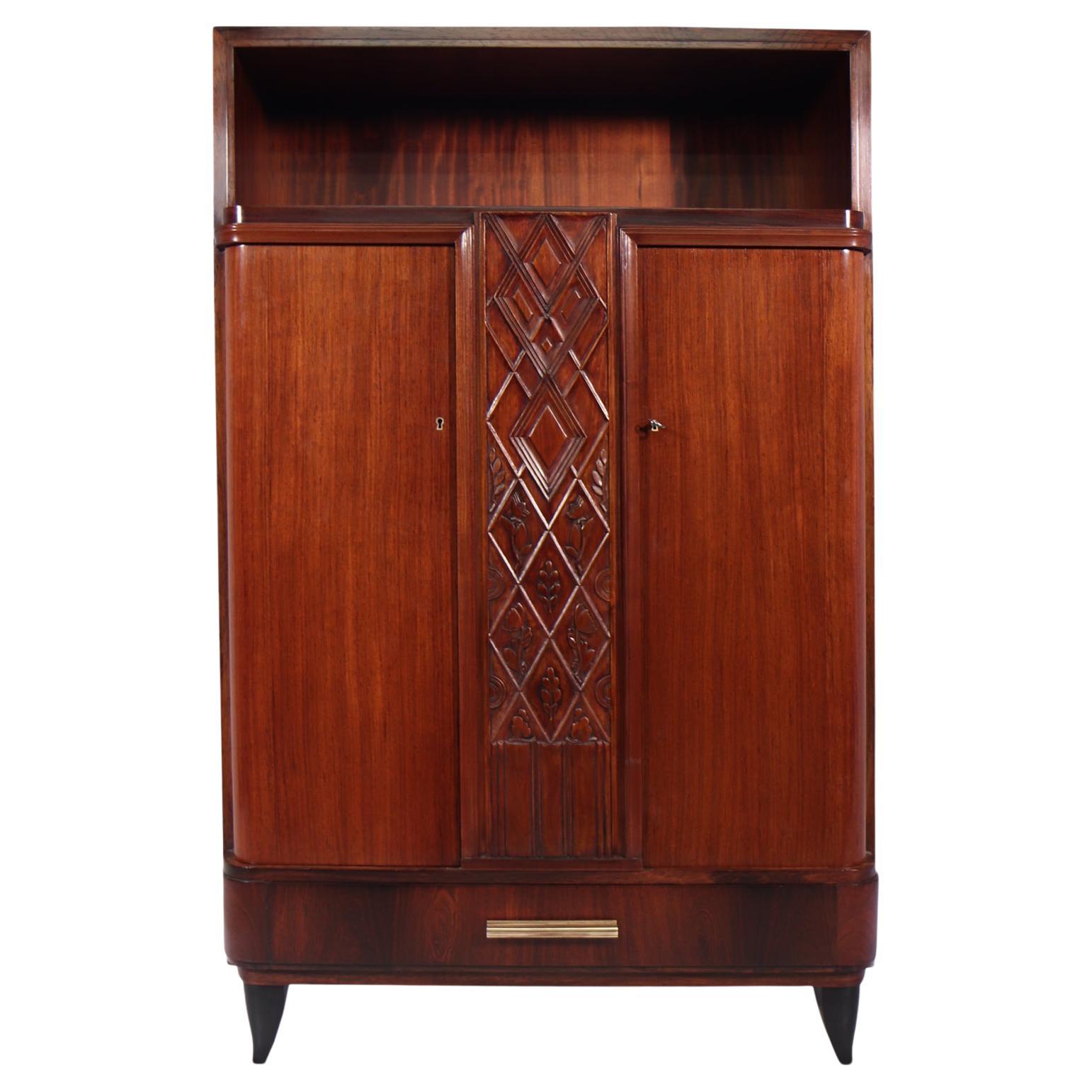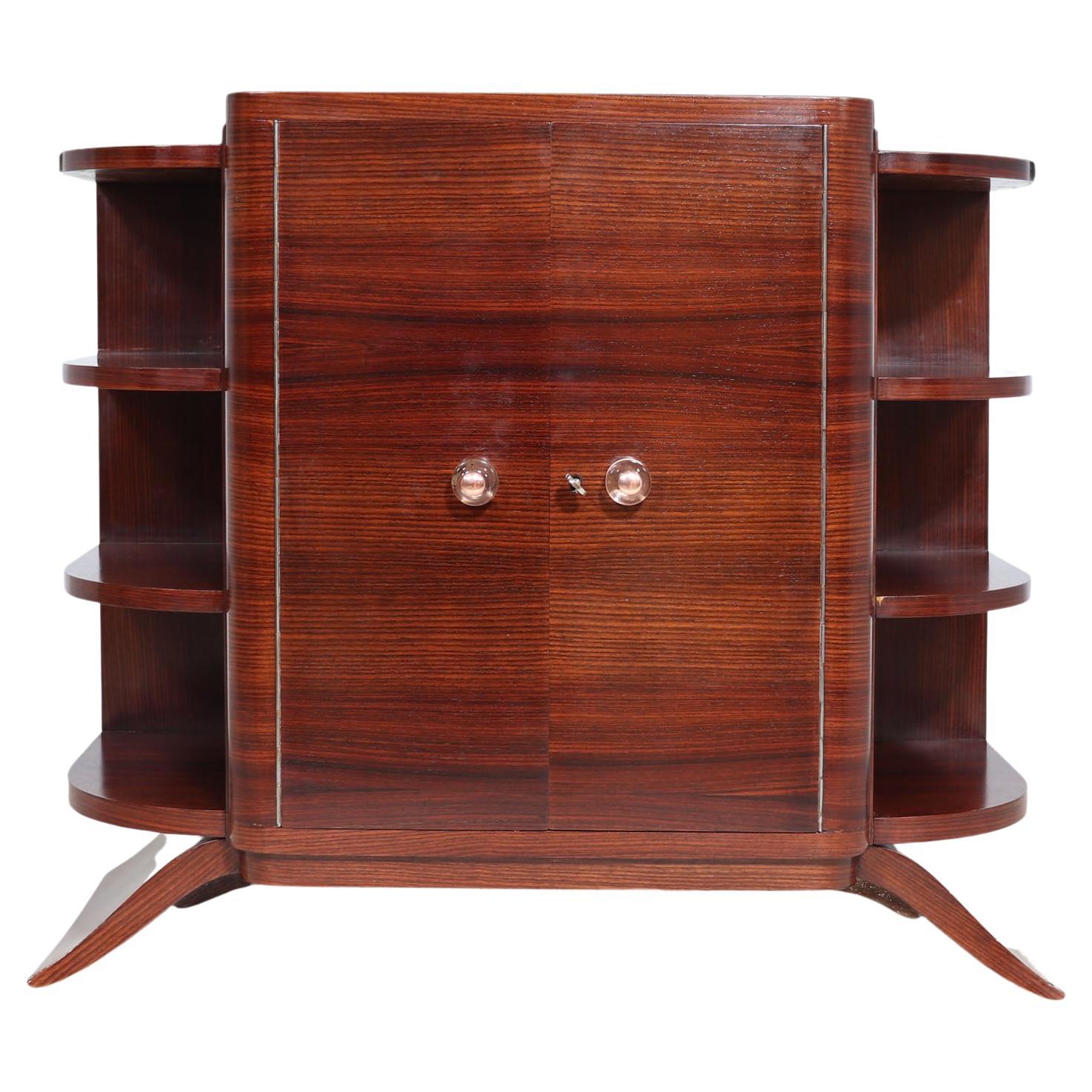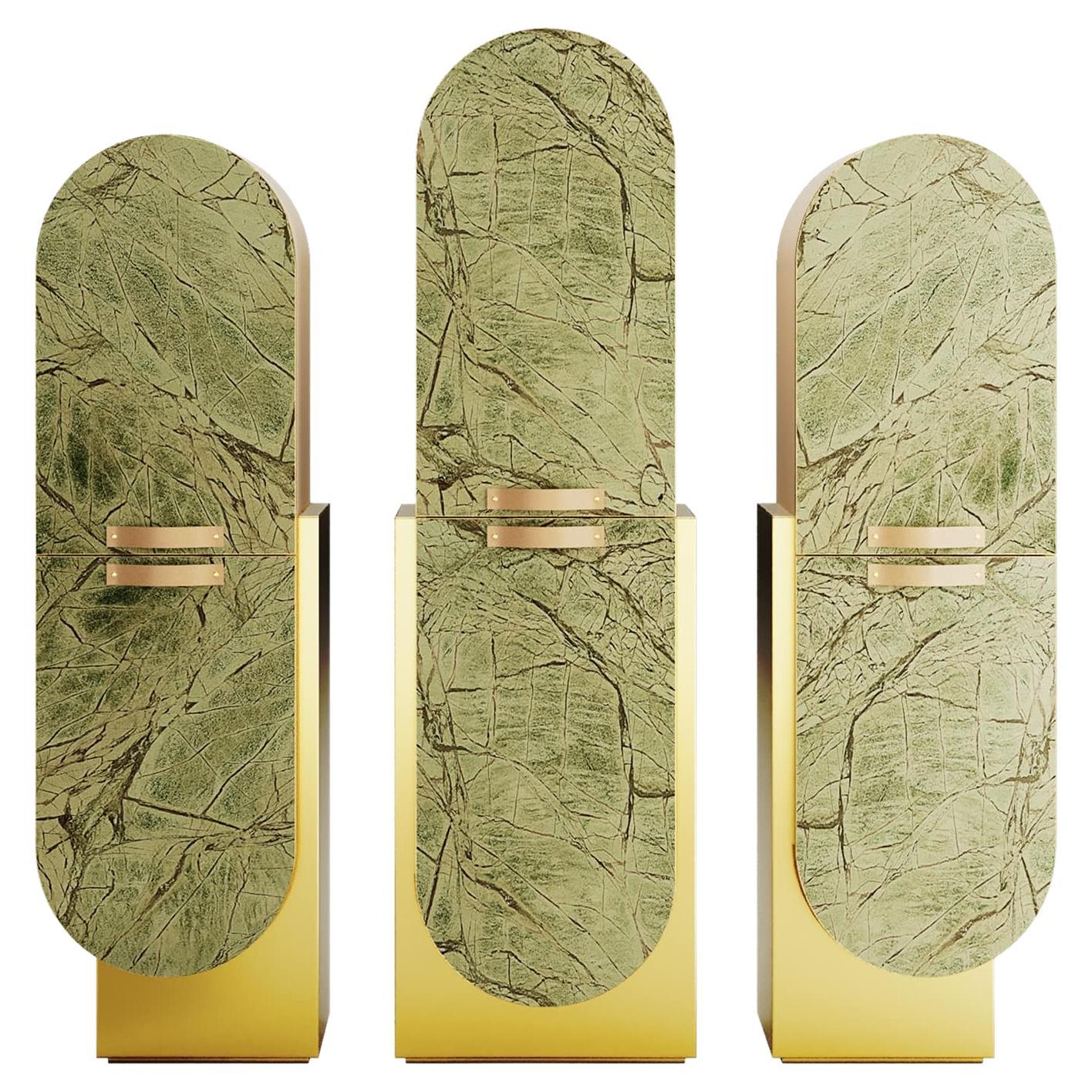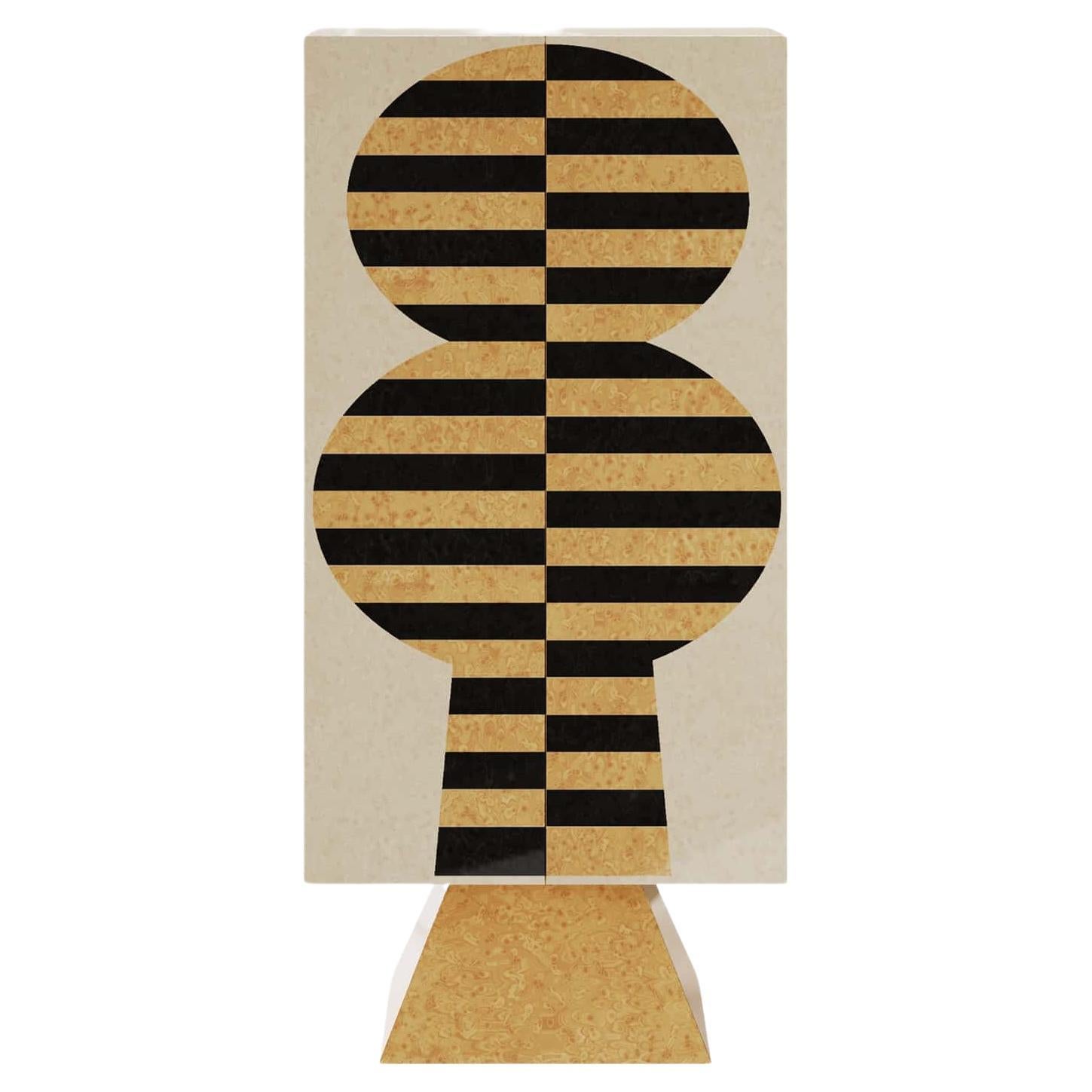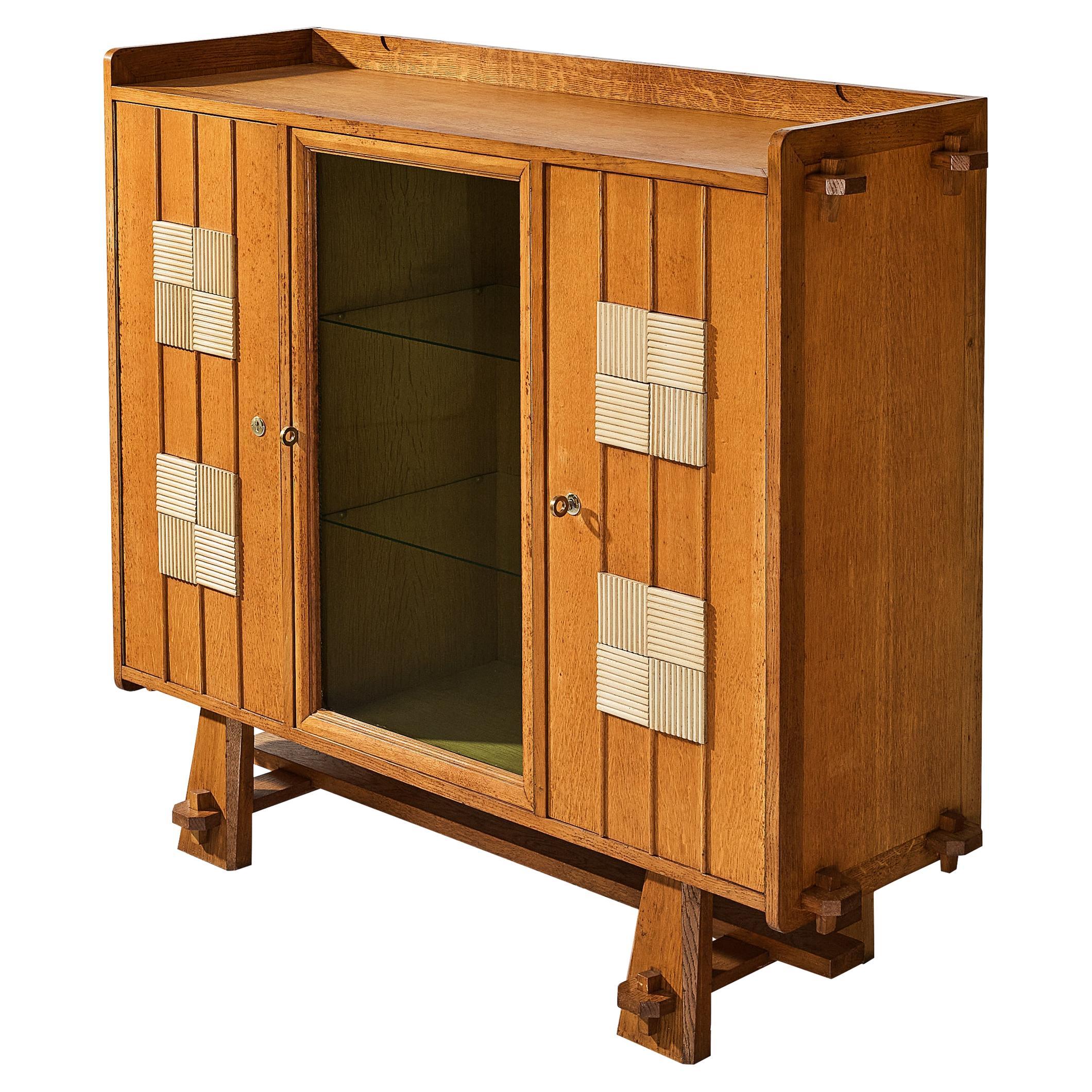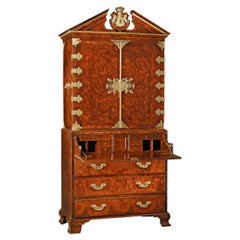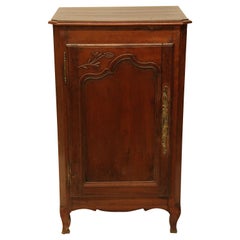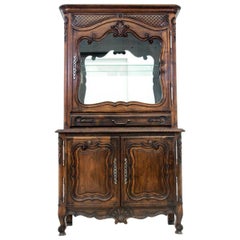
French Ocularist's Glass Eye Cabinet
View Similar Items
Want more images or videos?
Request additional images or videos from the seller
1 of 10
French Ocularist's Glass Eye Cabinet
About the Item
- Dimensions:Height: 56.25 in (142.88 cm)Width: 17.63 in (44.79 cm)Depth: 11.88 in (30.18 cm)
- Materials and Techniques:
- Place of Origin:
- Period:
- Date of Manufacture:19th century
- Condition:
- Seller Location:New Orleans, LA
- Reference Number:Seller: 31-69591stDibs: LU891134916742
About the Seller
5.0
Recognized Seller
These prestigious sellers are industry leaders and represent the highest echelon for item quality and design.
Established in 1912
1stDibs seller since 2010
93 sales on 1stDibs
Typical response time: 6 hours
More From This SellerView All
- Mahogany Upright Cane CabinetLocated in New Orleans, LAClassical style and impeccable design distinguish this English upright cane cabinet. Crafted of lustrous Cuban mahogany, this case is comprised of a beautifully paneled door which op...Category
Antique 19th Century English Cabinets
MaterialsBrass
- English Upright Cane CabinetLocated in New Orleans, LAThis English cane cabinet exhibits classical style and impeccable design. Crafted of lustrous Cuban mahogany, this upright case features a beautifully paneled door which opens to rev...Category
Antique 19th Century English Cabinets
MaterialsBrass
$28,500 - King George I Ambassadorial Secrétaire-CabinetLocated in New Orleans, LAThis highly important secrétaire-cabinet was crafted for and specially ordered by King George I for the British Ambassador to Russia. From its craftsmanship and materials to its exceptional artistry, it is a work of royal and historic significance that exudes power in each and every detail. The broken pediment at its apex features the simplified royal coat of arms bearing the king’s crown, while the interior is adorned by portraits of the British Royal Family. Placed within the ambassador’s St. Petersburg home, this entirely unique piece of furniture would have been a potent reminder of England's grandeur and political importance. Relations between England and Russia during this period were at an all-time high. Peter the Great had traveled to England in 1698 as part of his widely known “Grand Embassy” tour, wherein he attempted to gain foreign support against the Ottoman Empire. He spent a period of nearly four months there, meeting with King William III and his court on numerous occasions. Noted academic Arthur MacGregor wrote concerning the impact of the trip, “For two decades following Peter's visit, British influence in Russia reached a peak. It manifested itself in social custom, in craft practice and in ships and naval organization... it reached a significant sector of the population before relations cooled once again and the two nations pulled back from this era of unprecedented cordiality.” First and foremost, however, it is a reminder of British might and influence. By the reign of King George I, England had come into its own as a world power. Unique in its design, this cabinet is a reflection of the country’s might. It is crafted from the highest-quality solid walnut and burr walnut adorned by gilded lock plates and engraved hinges. The presence of ormolu at its apex and lining the doors was a rarity for this period, and its addition makes manifest the importance of the design. The outer doors open to reveal multiple interiors, including fifteen separate drawers around a central cupboard; the cupboard doors each bear mezzotint portraits of George I and his father, Ernest Augustus, Elector of Hanover. An etching after the portrait of George I dating to circa 1716 is in London’s Royal Academy. A second, inner pair of doors are adorned by mezzotints of the Prince and Princess of Wales (later Queen Caroline and George II), which are both after portraits by Sir Godfrey Kneller dated 1716 in the Royal Collection. A final portrait is revealed on the very interior of the cabinet, where a mezzotint of Frederick, Anne, Amelia and Caroline, children of the Prince of Wales, resides. An etching (circa 1715-1720) after this portrait can be found in the National Portrait Gallery (London). Apart from its abundance of royal portraiture, the cabinet features stunning painted decoration, including floral designs as well as clouds, birds and trees in a bucolic motif reminiscent of Eden. Its lower portion is a study in both form and function, featuring a fitted secrétaire-drawer above three additional drawers for storage. The cabinet appears in The Shorter Dictionary of English Furniture by R. Edwards from 1964, a text that is regarded as the bible of British furniture design. Edwards describes it as a “writing cabinet...given by George I to the British Ambassador at the Russian court.” The cabinet was likely made for the 18th-century German diplomat and writer Friedrich Christian Weber, who represented English interests at the Russian court from 1714 until 1719. Although Weber’s tenure as ambassador was relatively short, while in St. Petersburg, he authored his account entitled Das veraenderte Russland (The Present State of Russia), which was published in three volumes in 1721, 1739 and 1740. It may, however, also have been made for George Douglas, 2nd Earl of Dumbarton, who served as ambassador alongside Weber in 1716. Diplomatic relations ceased between the two countries in 1721. In 1928, the cabinet appeared for sale at the International Exhibition of Antiques & Works of Art in Olympia. It had previously been in the collection of the Woltner family of Bordeaux, the celebrated vintners who owned the estate Château Laville Haut-Brion and produced wine of the same name. According to the family, Monsieur Woltner was given the cabinet as a gift from an aunt who lived in Russia for many years. After leaving the Woltner collection, the cabinet was acquired by William Berry...Category
Antique 18th Century English Georgian Secretaires
MaterialsBrass
- Mahogany Bureau Cabinet After Thomas ChippendaleBy Thomas ChippendaleLocated in New Orleans, LAThis extraordinary Irish bureau cabinet was crafted based on a design for a desk and bookcase drawn from Thomas Chippendale’s famed 1762 edition of The Gentleman and Cabinet-Maker's ...Category
Antique 18th Century Irish Chippendale Cabinets
MaterialsMirror, Mahogany
- Hupfeld Phonoliszt-Violina Model B Music CabinetLocated in New Orleans, LAThis incredible Hupfeld Phonoliszt-Violina Model B music cabinet is among the rarest and most advanced automatic music players of its time. The remarkable machine, crafted by renowned Leipzig firm of Ludwig Hupfeld, is one of the most mechanically complex music players ever made, boasting three self-playing violins accompanied by a self-playing piano. Once made in the 1000s to entertain patrons of upscale hotels, restaurants, and cafes, these extraordinary machines...Category
20th Century German Other Musical Instruments
MaterialsWood
- 19th Century Watch Winding Display CabinetLocated in New Orleans, LAThis incredible, one-of-a-kind watch display cabinet brings together the beauty of an antique with the functionality of modern technology. Crafted of mahogany, this 19th century jewelry display cabinet...Category
Antique 19th Century Unknown Empire Cabinets
MaterialsMahogany
You May Also Like
- French 40s Art Deco Mirror-Clad Cabinet w. Glass AppliquesLocated in Isle Sur La Sorgue, VaucluseVery chic and unusual parisian cupboard/cabinet, clad on the front and sides with clear beveled mirrors and sapphire-blue beveled glass appliqués. Exceptionally well-made. Orig...Category
20th Century French Art Deco Cupboards
- French Cherry CabinetLocated in Wilson, NCFrench cherry cabinet, the top with ''bread boarded'' and shaped edge molding , door and sides with inset panels, the door has carved foliate in relief a...Category
Antique 1830s French Cabinets
MaterialsBrass, Steel
$1,250 - French Display Cabinet, France, 1880Located in Chorzów, PLDisplay cabinet, France, 1930. Very good condition. Origin: France Material: Walnut Year: 1880 Dimensions: height 182 cm, width 100 cm, depth 40 cm.Category
Antique 1880s French Louis XVI Vitrines
MaterialsWalnut
$1,767 Sale Price20% Off - French Provincial Walnut Flanking Glass & Cabinet Arched Dome Cupboard, C. 1780Located in Hollywood, SCFrench Provincial walnut cupboard with arched dome cornice, flanking upper case glass doors with adjustable interior shelving, lower case flanking doors on the original brass hinges,...Category
Antique 1780s French French Provincial Cupboards
MaterialsBrass
$9,000 Sale Price35% Off - Contemporary Modern Glass Front CabinetLocated in Brooklyn, NYUnique frosted glass-front two-door cabinet with three internal shelves and ample space to house multiple electronic components. Please confirm item location (NY or NJ) with dealer.Category
21st Century and Contemporary Unknown Modern Cabinets
MaterialsWood, Glass
$2,380 Sale Price36% Off - 21st Century Modern Cabinet Set, Green Marble, White Bird Eye & Brass BaseBy Hommes StudioLocated in Porto, PTLimited Edition: 21th Century Modern Cabinet Set, Green Marinace Granite, Silver Leaf & Gold Base Troya Cabinet is a modern display cabinet for an elegant living area. The Troya dua...Category
21st Century and Contemporary Portuguese Modern Cabinets
MaterialsMarble, Granite, Brass
Recently Viewed
View AllMore Ways To Browse
Antique Prosthetic Hand
Dish Rack Wood
Japan Bronze Waves Flower Stand
Primitive Jelly Cupboard
Primitive Jelly
513 Riflesso
Antique Larder Cupboard
Antique Welsh Hutch
Early American Step Back Cupboard
Larder Cupboard Antique
Rustic Country Hutch
Two Part Welsh Cupboard
Vestry Cabinet
Antique Chicken Coop
Vintage Kitchen Dresser Cupboard
Antique Cheese Cabinet
Jam Cupboard
Larder Cupboard Used

